Lisuan Tech, a semiconductor startup based in China, has officially announced its first gaming graphics card—the 7G106. Designed to serve the growing domestic PC gaming audience, the 7G106 is built to deliver consistent performance while offering a cost-effective alternative to mainstream international brands. The launch highlights China’s increasing push to localize hardware production and reduce external dependency in the GPU market.
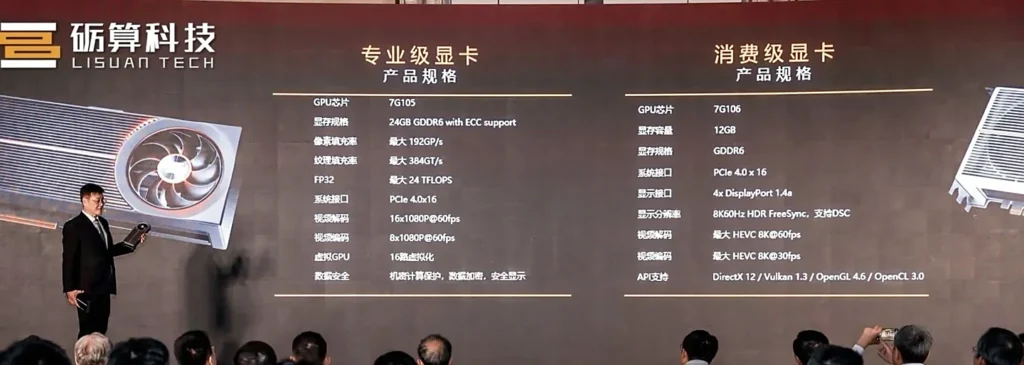
The 7G106 is built on Lisuan Tech’s in-house “TrueGPU” graphics architecture and manufactured using TSMC’s 6nm process technology. It is a monolithic die GPU with support for DirectX 12, Vulkan 1.3, and OpenGL 4.6. While it includes support for modern graphics features, it does not include ray tracing or DirectX 12 Ultimate capabilities. The GPU features a SIMD engine that handles both FP32 and INT8 instructions, reaching a peak FP32 compute performance of 24 TFLOP/s. OpenCL 3.0 serves as the primary compute language for this chip.
Graphics processing is handled through 192 texture units and 96 render output units, combined with 12 GB of GDDR6 memory on a 192-bit memory bus. Final memory clock speeds have not yet been announced. The 7G106 also includes hardware support for modern video formats, offering AV1 and HEVC decoding up to 8K at 60 frames per second, as well as encoding support for AV1 at 4K 30 FPS and HEVC at 8K 30 FPS. For display connectivity, the GPU features four DisplayPort 1.4 outputs with Display Stream Compression (DSC) 1.2b. HDMI outputs are not present, likely due to licensing cost considerations.
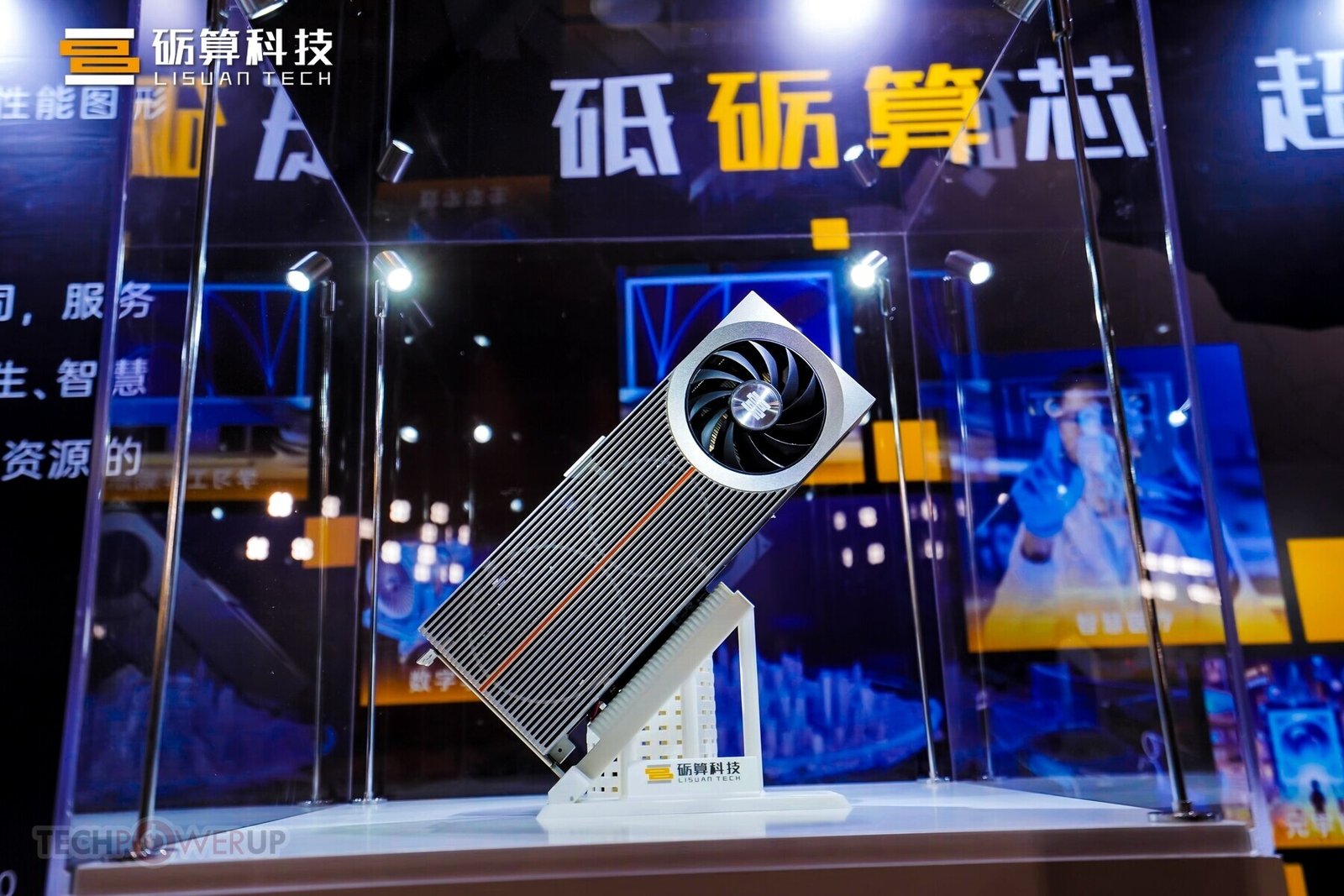
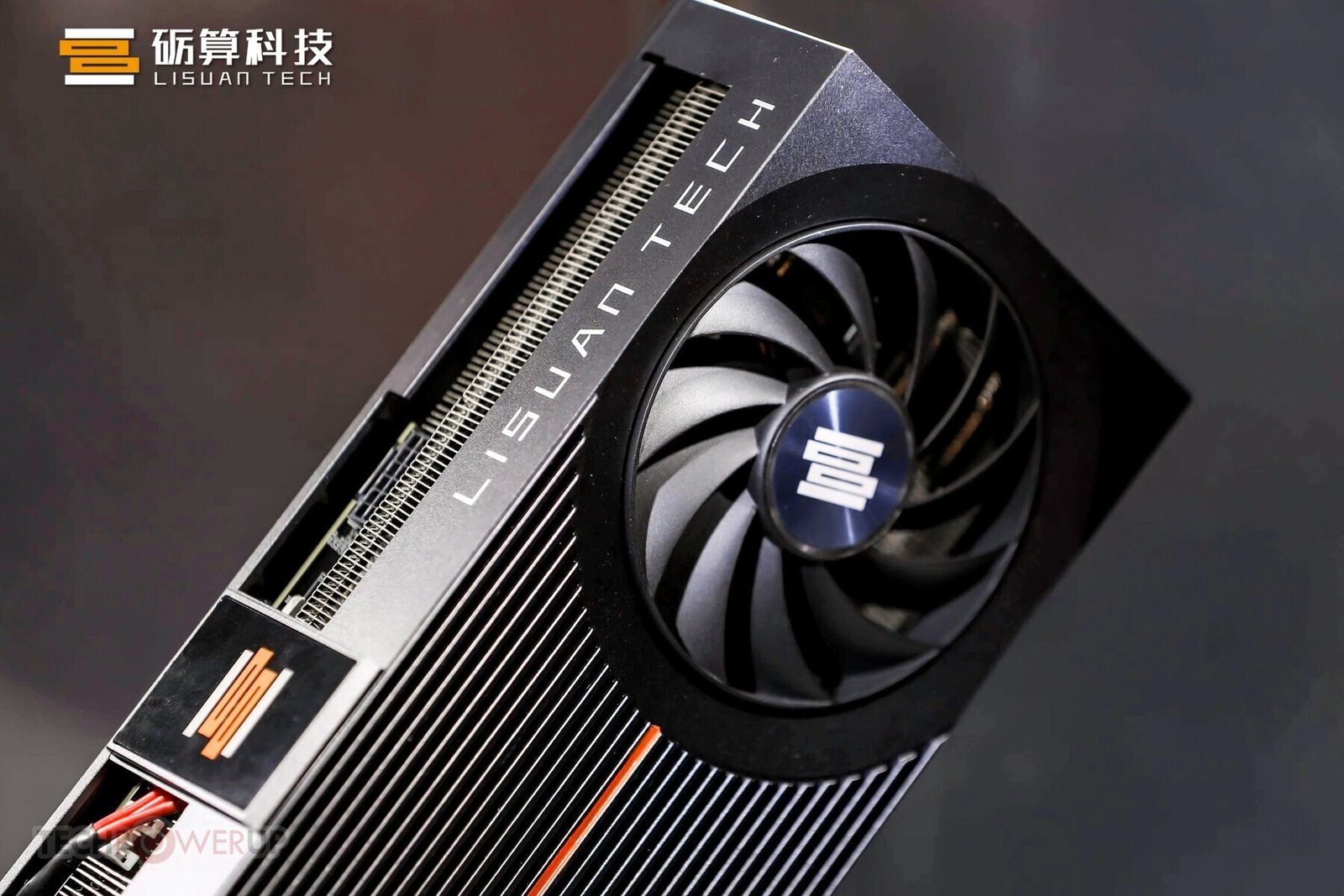
The card connects over PCI Express 4.0 x16 and is shown in reference designs using a single 8-pin PCIe power connector. This setup can deliver up to 225 watts of power. A version with a 16-pin connector was also seen during the event, possibly intended for a higher-powered model once final clock speeds are decided.
In addition to gaming performance, the 7G106 includes support for SR-IOV virtualization. This feature allows a single GPU to be shared across up to 16 virtual machines, offering value in data center and enterprise environments where containerized workloads are common.
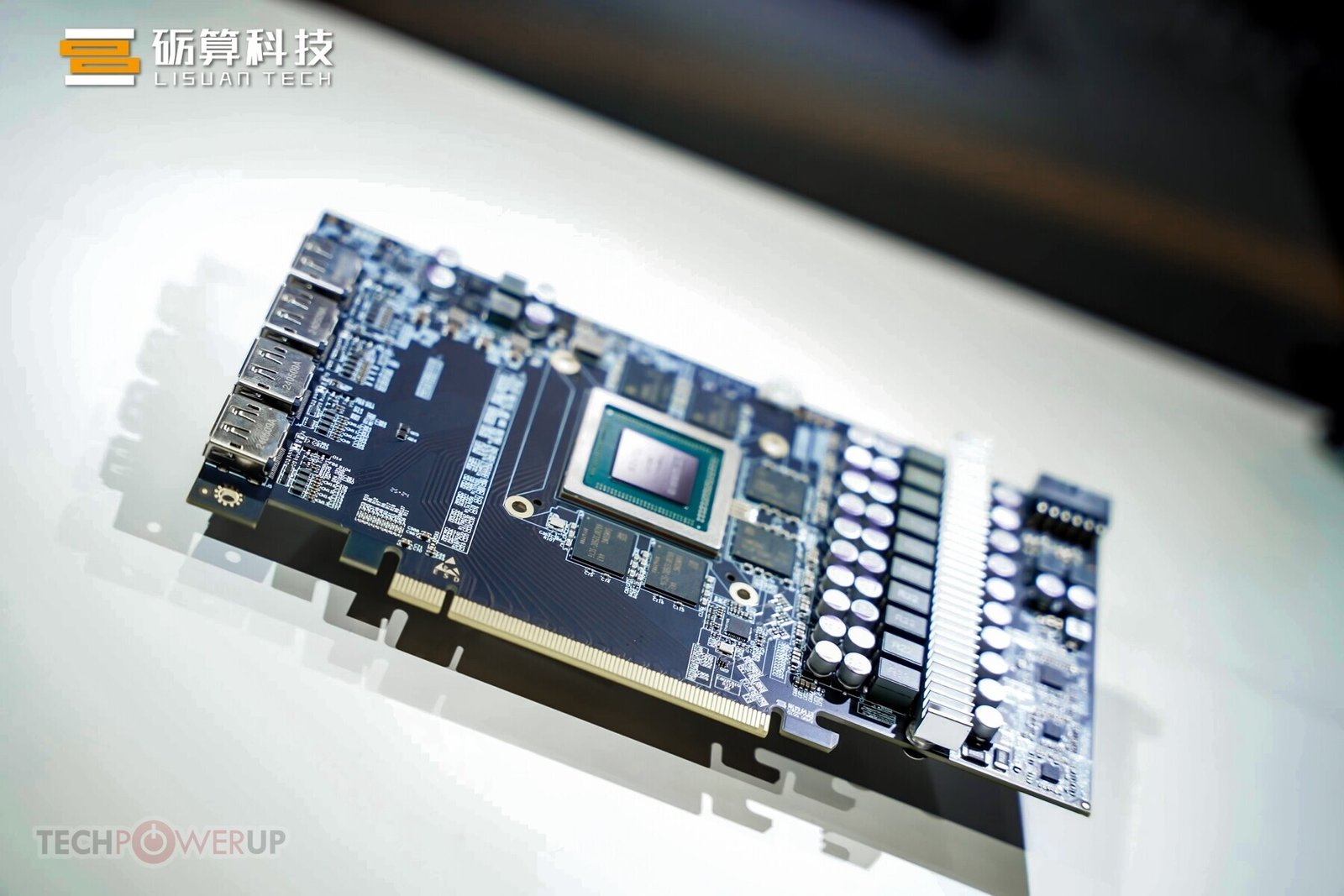
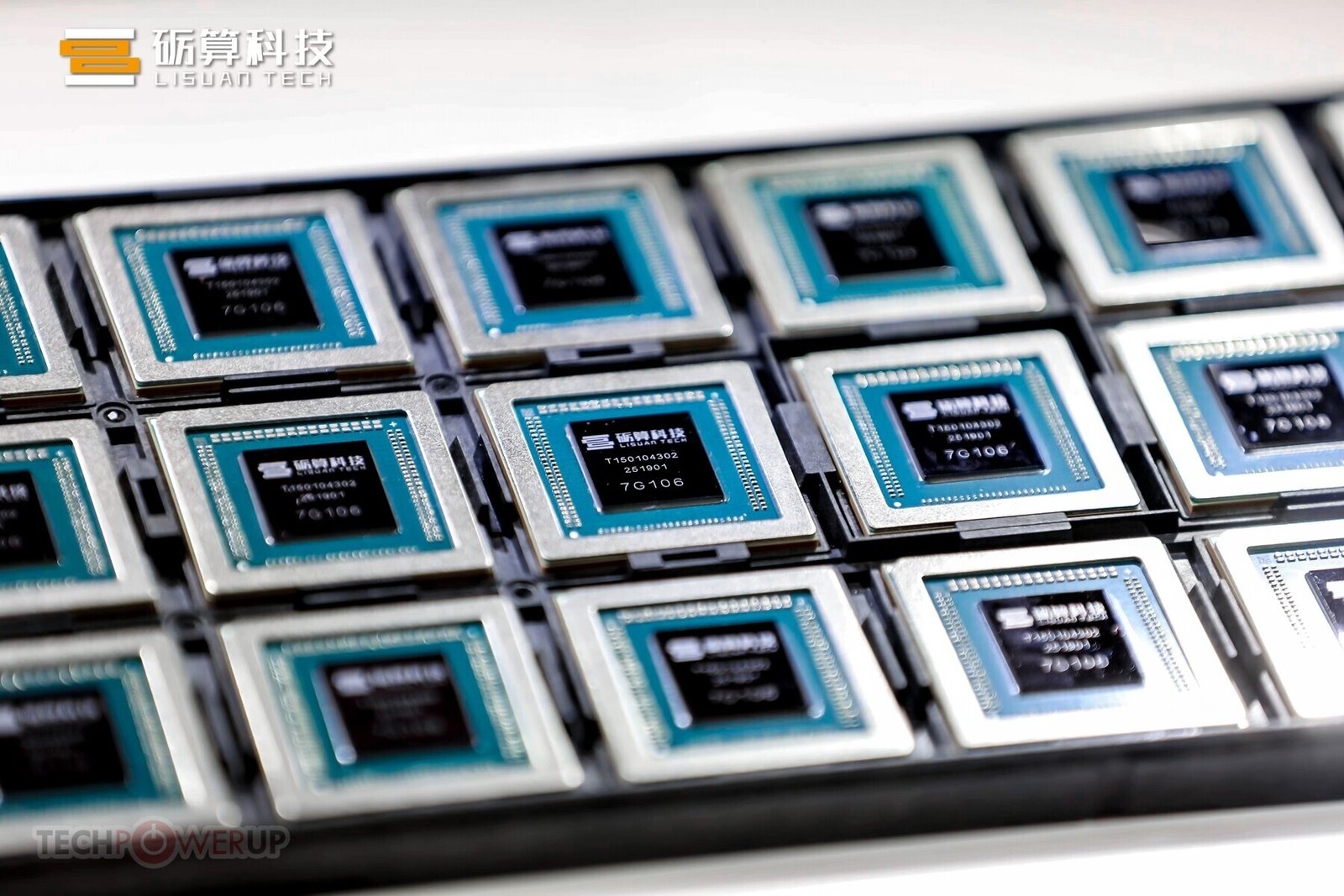
During the announcement event, the GPU was demonstrated running Black Myth: Wukong at 4K resolution using high settings, delivering playable frame rates. In performance benchmarks, the card scored 26,800 in 3DMark Fire Strike and 111,290 in the Geekbench 6.4 OpenCL test. These results indicate that the 7G106 may compete in the mid to upper-mid-range graphics segment, depending on final retail specifications.
Lisuan Tech received the A0 silicon of the chip on May 24, marking an early development milestone. Pricing and further variants have not been confirmed yet. The company plans to continue refining the hardware and software before preparing the product for market release. More details are expected as development progresses.







